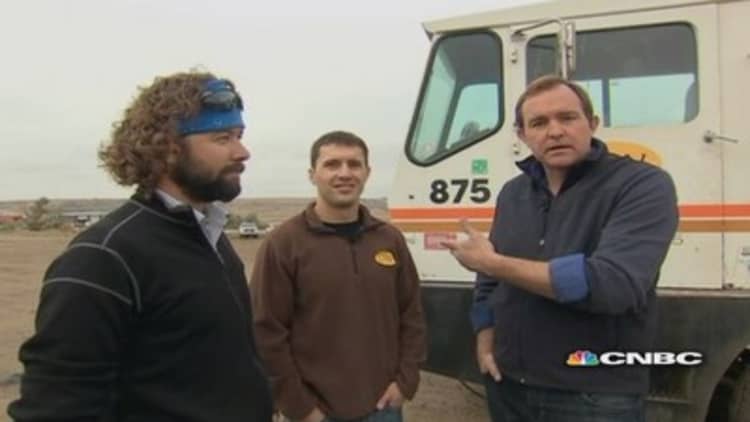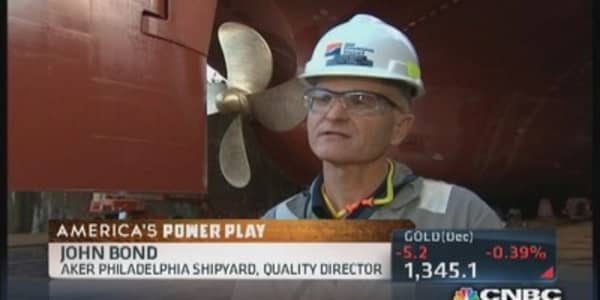
A handful of counties in North Dakota are churning out more oil and gas than the entire state of Alaska. Welcome to the Bakken, the jewel of The Rough Rider State.
But a look beyond the drillers working the state's Bakken field reveals many players who see another opportunity: building North Dakota's infrastructure.
In May, environmental nonprofit group Ceres released a report that drillers in the Bakken are flaring—or burning off—more than $100 million in natural gas a month. That's nearly one-third of all the gas drilled in the region, and it's a figure that has tripled in the past three years. The practice is so prolific that NASA says astronauts can see the region's flares from space.
(Read more: Good news: Gas prices are falling)
The problem? While drilling in the Bakken has increased the nation's supply of natural gas, the buildout of the pipelines that transport it has not been able to keep up. Drillers with a glut of gas are left with two options: release their excess supply into the atmosphere untreated or burn it off. They typically choose the latter.
It's not an option that the drillers like. Burning product is essentially burning money. Last week, North Dakota's mineral rights holders launched a series of class action lawsuits against the state's biggest drillers over the lost revenue.
Some pipeline builders have sensed an opportunity. Earlier this month, Energy Transfer Equity agreed to buy PVR Partners for $3.8 billion, while Crestwood Midstream announced a $750 million deal to buy privately held Arrow Midstream Holdings. Crestwood will become one of the biggest processors in the Bakken after the deal.
(Read more: Texas energy: It really is bigger there)
Hess plans to spend more than $300 million to double its processing plant in Tioga. N.D.; Alliance Pipeline is building a $141 million 79-mile extension that will carry natural gas from the Bakken to its larger interstate pipeline from Alberta.
And the infrastructure play doesn't end with pipelines. Ken Hartog, a Brooklyn, N.Y.-based developer, left the East Coast to pursue real estate opportunities in an even hotter market ... Williston, N.D.
After initially struggling to find investors to back his projects, Hartog was finally able to secure the capital to build trailer parks, single family homes and even a truck stop to support the region's massive population boom.
(Read more: America, energy security and the ghosts of 1973)

Workers lured by the promise of six-figure salaries in the energy industry flocked to Williston in such great numbers that they outpaced the city's housing supply. Parking lots filled with trailers and trucks—temporary homes for the newest residents, mostly young men with a job on an oil-rig but no place to stay. Hartog has since seen huge returns on his real estate investments in the region, bigger even than he saw in Brooklyn's booming real estate market.
In Williston, success stories like Hartog's are common. Fortunes have been made by investors willing to risk the capital to fill a need in the nation's fastest-growing boom town. And while infrastructure might not seem like the sexiest play, for savvy investors in North Dakota, it might be the one the best pays off.
— By CNBC's Brad Quick. Follow him on Twitter @bquick83




